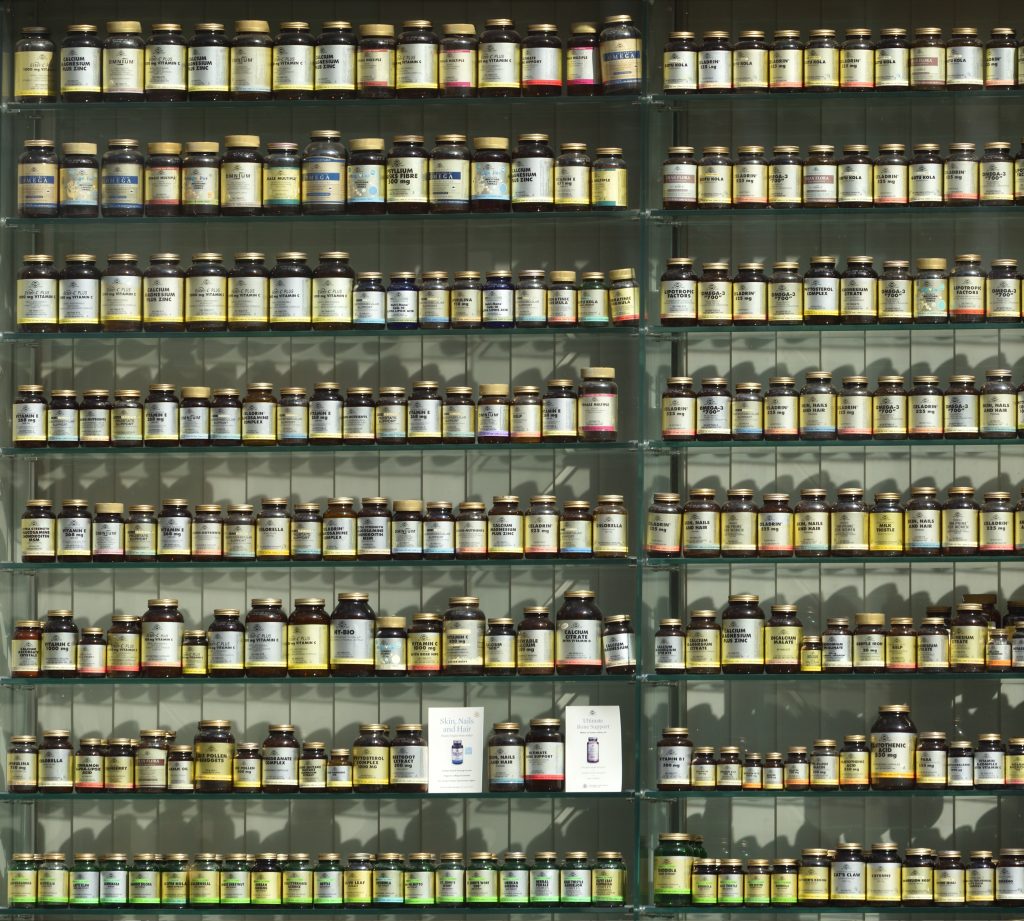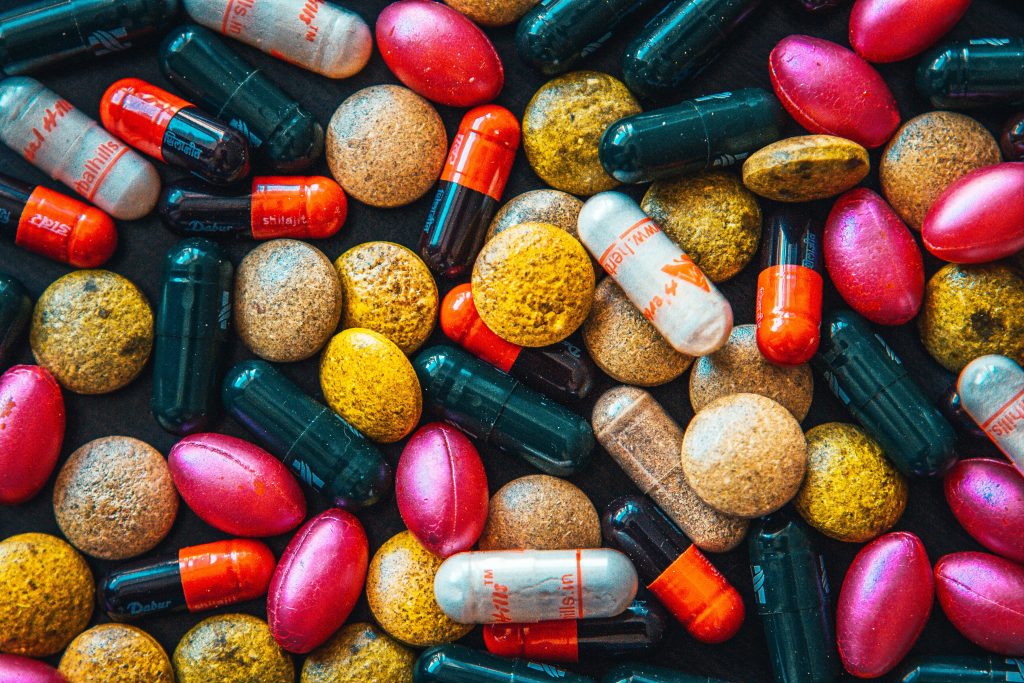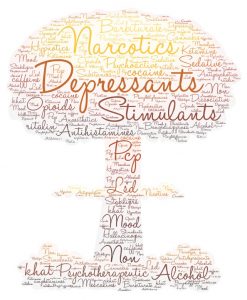5.1 Introduction to Drug Classes
The Controlled Drugs and Substances Act (CDSA) regulates five classes of drugs:

- Depressants (e.g., antihistamines, alcohol, barbiturates, non-barbiturate sedative-hypnotics, benzodiazepines including Z-drugs and inhalants)
- Opioids (Narcotics) (e.g., fentanyl, heroin, methadone, morphine, opium, oxycodone)
- Stimulants (e.g., amphetamines, anorexiants, bath salts (methylendioxypyrovalerone and mephedrone), betel, caffeine, cocaine, decongestants, khat methamphetamines, Ritalin and related drugs to treat attention-deficit/hyperactivity disorder {ADHD}, and nicotine)
- Hallucinogens – (placed into five categories: Cannabis, dissociative anaesthetics {PCP and ketamine}, LSD-like, novel psychoactive substances and phenylethylamines: mescaline-like psychoactive agents)
- Psychotherapeutic Agents – (placed into three categories: antidepressants, antipsychotics and mood stabilizers)
Each class has distinguishing properties, and drugs within each class often produce similar effects. However, all controlled substances, regardless of class, share a number of common features. This introduction will familiarize you with these shared features and define the terms frequently associated with these drugs. All controlled substances have abuse potential or are immediate precursors to substances with abuse potential. With the exception of anabolic steroids, controlled substances are abused to alter mood, thought, and feeling through their actions on the central nervous system (brain and spinal cord). Some of these drugs alleviate pain, anxiety, or depression. Some induce sleep and others energize. Though some controlled substances are therapeutically useful, the “feel good” effects of these drugs contribute to their abuse. The extent to which a substance is reliably capable of producing intensely pleasurable feelings (euphoria) increases the likelihood of that substance being abused.
Drug Abuse
When controlled substances are used in a manner or amount inconsistent with the legitimate medical use, it is called drug abuse. The non-sanctioned use of substances controlled in Schedules I through III of the CDSA is considered drug abuse. While legal pharmaceuticals placed under control in the CDSA are prescribed and used by patients for medical treatment, the use of these same pharmaceuticals outside the scope of sound medical practice is drug abuse.
Dependence
In addition to having abuse potential, most controlled substances are capable of producing dependence, either physical or psychological.
Physical Dependence
Physical dependence refers to the changes that have occurred in the body after repeated use of a drug that necessitates the continued administration of the drug to prevent a withdrawal syndrome. This withdrawal syndrome can range from mildly unpleasant to life-threatening and is dependent on a number of factors, such as:
- The drug being used
- The dose and route of administration
- Concurrent use of other drugs
- Frequency and duration of drug use
- The age, sex, health, and genetic makeup of the user
Psychological Dependence
Psychological dependence refers to the perceived “need” or “craving” for a drug. Individuals who are psychologically dependent on a particular substance often feel that they cannot function without the continued use of that substance. While physical dependence disappears within days or weeks after drug use stops, psychological dependence can last much longer and is one of the primary reasons for relapse (initiation of drug use after a period of abstinence). Contrary to common belief, physical dependence is not addiction. While individuals with a substance use disorder are usually physically dependent on the drug they are abusing, a physical dependence can exist without addiction. For example, patients who take narcotics for chronic pain management or benzodiazepines to treat anxiety are likely to be physically dependent on that medication.
Addiction

Addiction is defined as compulsive drug-seeking behaviour where acquiring and using a drug becomes the most important activity in the user’s life. This definition implies a loss of control regarding drug use, and the person with a substance use disorder will continue to use a drug despite serious medical and/or social consequences.
Statistics Canada – Table 2 – Percentage of people who reported having used cannabis in the past 12 months by smoking status, household population aged 15 and older, Canada, 2017 and 2019 (1). Drugs within a class are often compared with each other with terms like potency and efficacy. Potency refers to the amount of a drug that must be taken to produce a certain effect, while efficacy refers to whether or not a drug is capable of producing a given effect regardless of dose. Both the strength and the ability of a substance to produce certain effects play a role in whether that drug is selected by the drug user. It is important to keep in mind that the effects produced by any drug can vary significantly and is largely dependent on the dose and route of administration. Concurrent use of other drugs can enhance or block an effect, and substance abusers often take more than one drug to boost the desired effects or counter unwanted side effects. The risks associated with drug abuse cannot be accurately predicted because each user has his/her own unique sensitivity to a drug. There are a number of theories that attempt to explain these differences, and it is clear that a genetic component may predispose an individual to certain toxicities or even addictive behaviour.
Useful links
In the Table 1 & Table 2 of Statistics Canada, each of the five classes of drugs is reviewed and various drugs within each class are profiled.
- “Table 1” by Statistics Canada is in the Public Domain
- “Table 2” by Statistics Canada is in the Public Domain

Table 1
Percentage of people who reported having used alcohol, cannabis, cigarettes or an illegal drug in the past year, household population aged 15 and older, Canada, 2019(2)
| Total population | Percent | |
|---|---|---|
| thousands of people | % | |
| Alcohol | 23,697.4 | 76.5 |
| Sex | ||
| Men | 11,971.1 | 78.3 |
| Women | 11,726.3 | 74.7 |
| Age group | ||
| 15 to 19 years | 986.0 | 46.3 |
| 20 to 24 years | 1,912.6 | 84.4 |
| 25 years and older | 20,798.8 | 78.2 |
| Cannabis | 6,410.3 | 20.7 |
| Sex | ||
| Men | 3,490.5 | 22.8 |
| Women | 2,919.7 | 18.6 |
| Age group | ||
| 15 to 19 years | 467.9 | 21.9 |
| 20 to 24 years | 1,010.6 | 44.6 |
| 25 years and older | 4,931.8 | 18.5 |
| Current cigarette smokers | 4,236.0 | 13.7 |
| Sex | ||
| Men | 2,380.0 | 15.6 |
| Women | 1,856.0 | 11.8 |
| Age group | ||
| 15 to 19 years | 171.9 | 8.1 |
| 20 to 24 years | 315.6 | 13.9 |
| 25 years and older | 3,748.5 | 14.1 |
| Illegal drug | 1,100.3 | 3.6 |
| Sex | ||
| Men | 628.7 | 4.1 |
| Women | 471.6 | 3.0 |
| Age group | ||
| 15 to 19 years | 65.7 | 3.1 |
| 20 to 24 years | 310.2 | 13.7 |
| 25 years and older | 724.4 | 2.7 |
Table 2
Percentage of people who reported having used cannabis in the past 12 months by smoking status, household population aged 15 and older, Canada, 2017 and 2019
| Current cigarette smokers – 2019 Canadian Alcohol and Drugs Survey | People who did not currently smoke cigarettes – 2019 Canadian Alcohol and Drugs Survey | Current cigarette smokers – 2017 Canadian Tobacco, Alcohol and Drugs Survey | People who did not currently smoke cigarettes – 2017 Canadian Tobacco, Alcohol and Drugs Survey | |
|---|---|---|---|---|
| % | % | % | % | |
| Total | 41.4 | 17.4 | 36.6 | 10.6 |
| Sex | ||||
| Men1 | 43.2 | 19.1 | 39.6 | 13.9 |
| Women | 39.1 | 15.9 | 33.1 | 7.42 |
| Age group | ||||
| 15 to 19 years | 84.6 | 16.5 | 69.3 | 14.8 |
| 20 to 24 years1 | 83.0 | 38.4 | 64.1 | 26.0 |
| 25 years and older | 35.92 | 15.72 | 32.72 | 8.8 |
References:
- Government Of Canada, Statistics Canada. (2021, December 20). Percentage of people who reported having used cannabis in the past 12 months by smoking status, household population aged 15 and older, Canada, 2017 and 2019. https://www150.statcan.gc.ca/n1/daily-quotidien/211220/t002c-eng.htm
- Government of Canada, Statistics Canada. (2021c, December 20). The Daily — Alcohol and drug use in Canada, 2019. https://www150.statcan.gc.ca/n1/daily-quotidien/211220/dq211220c-eng.htm
- Government of Canada, Statistics Canada. (2021d, December 20). The Daily — Alcohol and drug use in Canada, 2019. https://www150.statcan.gc.ca/n1/daily-quotidien/211220/dq211220c-eng.htm

